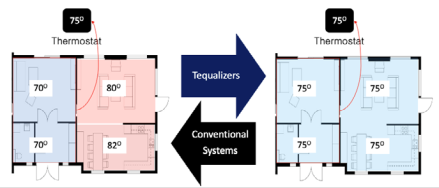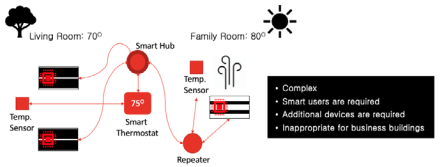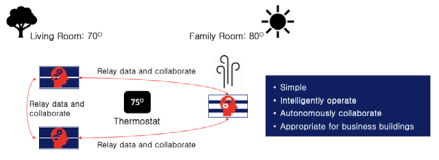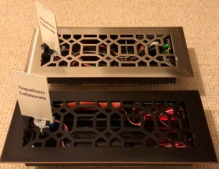TEQUALIZER: Reinventing HVAC Vents Using Artificial Intelligence (AI)
On a nice Sunday back in 2019, three friends, all engineers and scholars, were enjoying brunch together in a local restaurant, and one of them started complaining about temperature differences across rooms in their houses and workplaces. Instantly, all of them agreed on the problem, started sharing their individual experiences and stories with each other. In the end, they decided to team up to reinvent new HVAC vents through transdisciplinary research.

Problem
HVAC (Heating, Ventilating, and Air Conditioning) systems are engineered to be integrated into our infrastructure to provide us with a comfortable indoor environment. An HVAC thermostat allows us to choose a desired level of temperature in the associated HVAC zone. In real applications though, we often stay in an HVAC zone with varying temperature across rooms. This is because of several reasons including, but not limited to, the specific activity occurring in each room, the natural environment of each room (e.g., the directions and sizes of windows), the equipment operating in each room, and the distance of each room’s vents from the HVAC. Therefore, even if the temperature at the location of the thermostat is maintained within a comfortable temperature range as set, individual rooms can have large deviations in air temperature, creating an uncomfortable indoor environment or incurring wasted energy in heating and cooling.
Suppose that there are two rooms (A and B) in an HVAC zone with the thermostat located in Room A. Further suppose that, while the HVAC is running, Room A reaches the set temperature sooner than Room B. Because the thermostat is in Room A, the HVAC stops running – Room B is still uncomfortable. On the other hand, if the thermostat is installed in Room B instead, the HVAC would continue to run based on the air temperature of Room B, overheating or overcooling Room A. Micro HVAC zoning is mostly prohibitive due to cost, complexity, and a variety of other reasons (e.g., rental properties or businesses in commercial buildings).

Approach
Such limitations of conventional HVAC systems led some businesses to the invention of smart vents in recent years. However, existing smart vents are complex to set up and use, not adequate for commercial buildings, and require additional devices, such as smart thermostats, additional sensor modules, and smart hubs. Therefore, they are not scalable and not applicable to a wide spectrum of customers.
By combining modern technological advancements made in computer science and information technology, we can design more intelligent HVAC vents that can do more for the convenience of human users, ideally providing a “simply drop-in & forget” solution that requires no additional devices or complicated human involvements. In particular, recent advancements in Artificial Intelligence (AI), Internet of Things (IoT), and tiny embedded computers, combined with the increasingly faster data communications and cloud computing, enable us to devise a new human-centered approach in reinventing HVAC vents. Such HVAC vents should be able to improve the quality of our indoor living environment while saving energy, all in a human-friendly and cost-efficient way.

Prototype

Through our interdisciplinary research, we have developed a new type of HVAC vents that we call Tequalizer (a short for Temperature Equalizer). We designed Tequalizer to be an energy-efficient and human-centered solution for making the temperature set on a central HVAC thermostat to be the actual temperature everywhere inside the HVAC zone.
Here, the key idea is to embed an AI (Artificial Intelligence) and sensors into each vent to enable them to autonomously collaborate, sense, and share their local environment with each other. Tequalizer vents actually register and collaborate in real time with each other to collectively control all dampers in such a way that the heating/cooling is dynamically redirected among the vents to reach and maintain uniform temperatures across rooms. A provisional application for patent has been submitted.
Co-authored by Byunggu Yu, Ahmet Zeytinci, and Junwhan Kim








